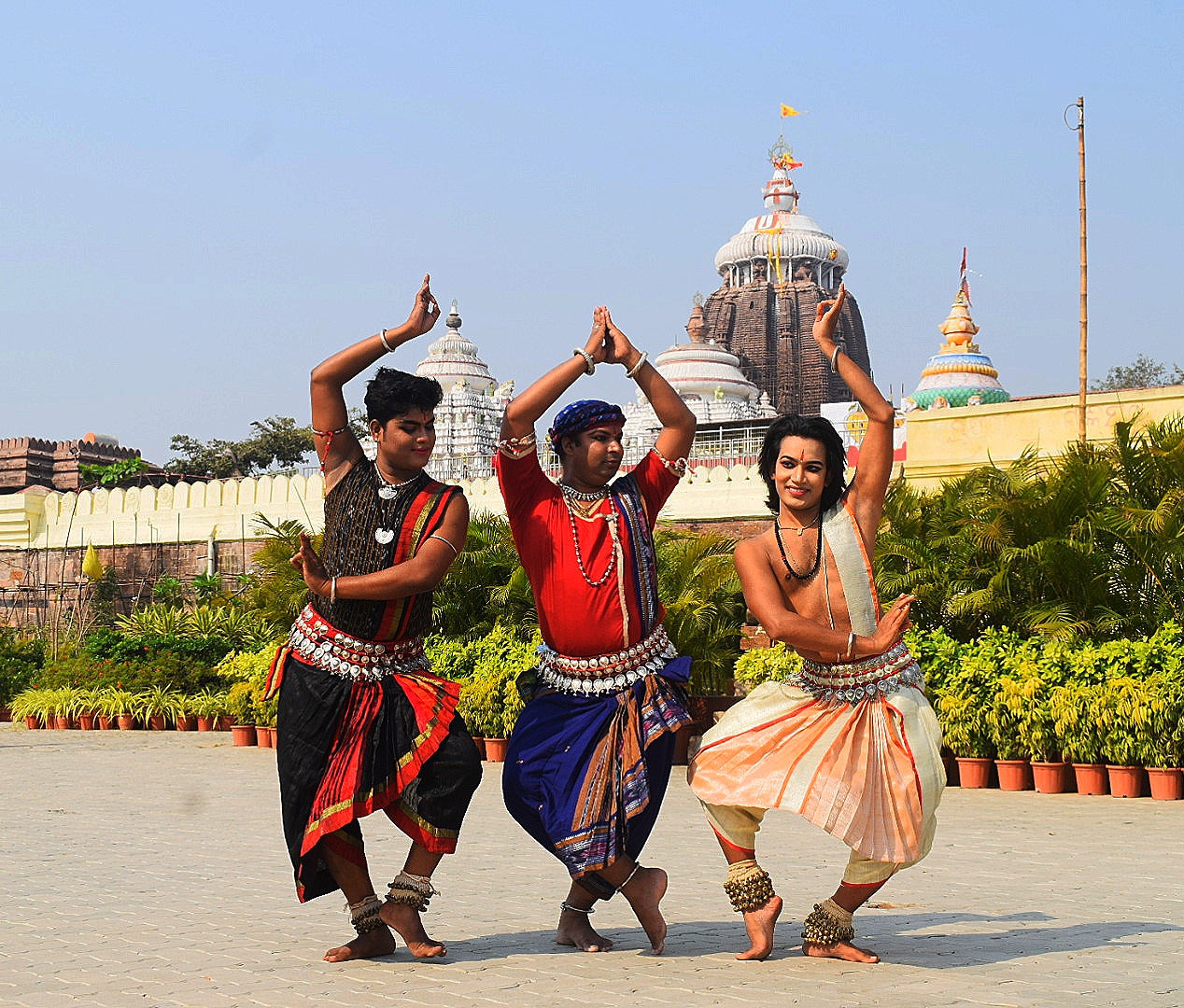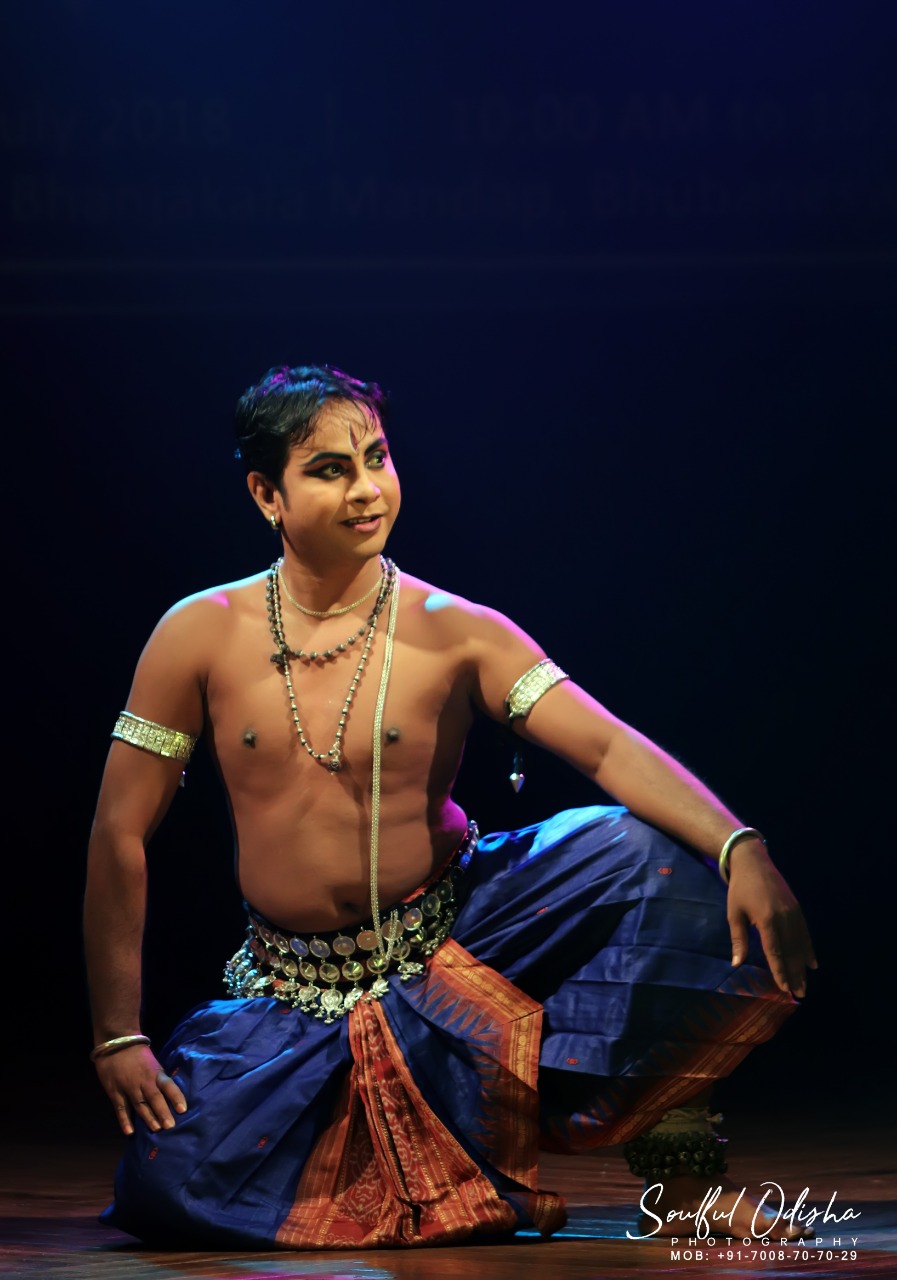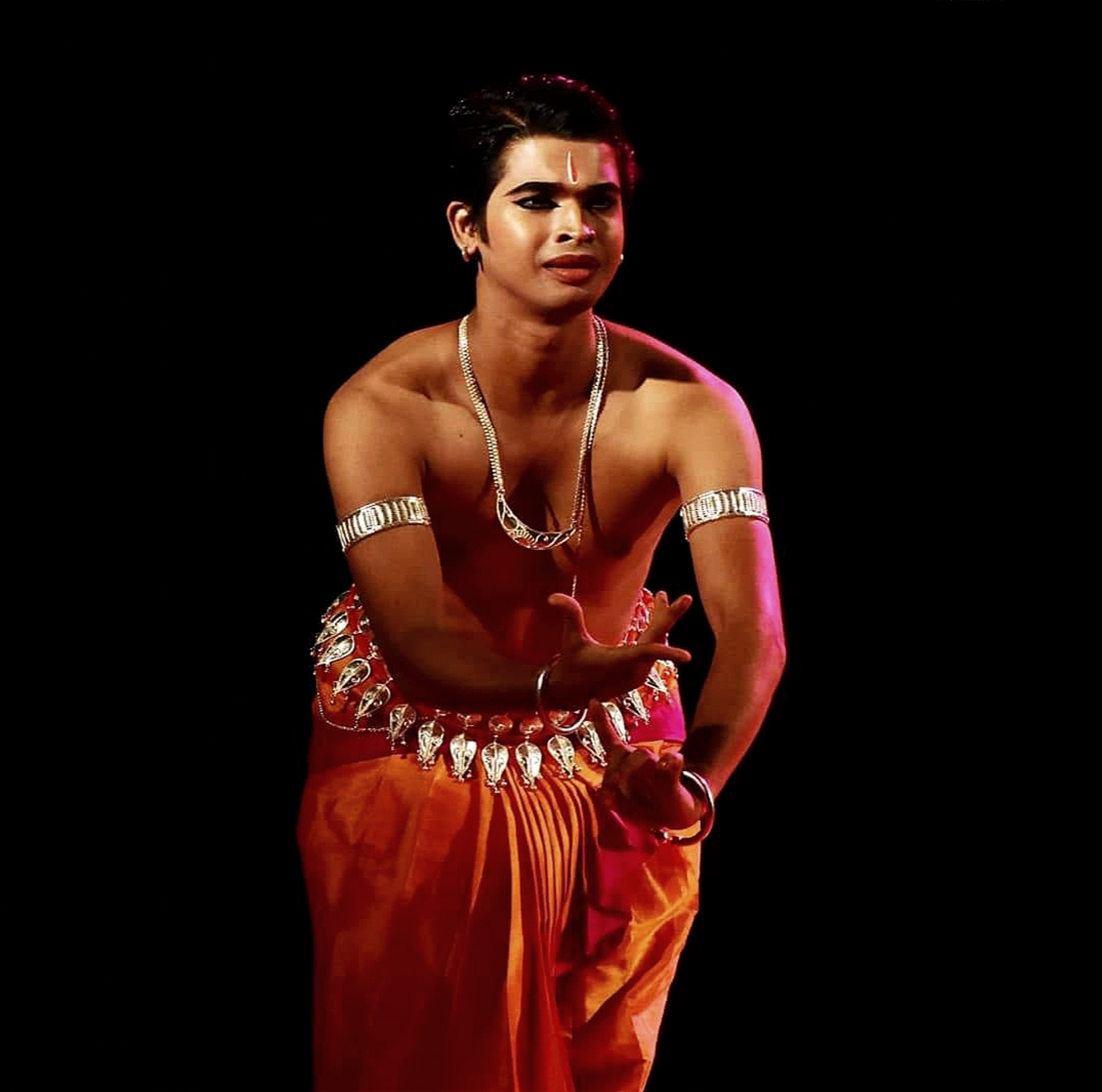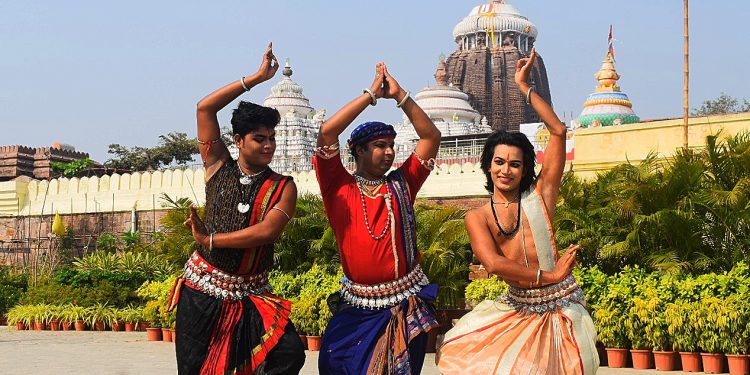According to Hindu mythology, Nataraja or God Shiva is the Lord of Dance or can be said that he is the originator of all dance forms. So, historically, dance, be it classical, folk or tribal, had been dominated by men. They were the gurus, composers and performers. There was a time when most first generation gurus and dancers were male and women were not encouraged to perform at public places. Back home, exponents like Gurus Kelucharan Mohapatra, Debaprasad Das and Pankaj Das are credited for the popularity of Odissi dance in 20th century. However, when Odissi was reconstructed as a classical dance form in 1958, male dancers got marginalised. It was then that the first generation female dancers like Sanjukta Panigrahi, Sonal Mansingh, Minati Mishra and Kumkum Mohanty presented Odissi on global platforms. After that it was rare to find a stand-alone male dancer in Odissi. In the last few years, however, there is a surge in male Odissi dancers who with their sheer brilliance have defied the popular perceptions that female performers depict the form’s fluid moves, sculpturesque poses, and delicate gestures in a better manner. Some of these classical dancers tell Sunday POST how difficult it was to overcome the challenges to carve a place in this women-dominated profession.

Kumar Bhimsen
Performing under the open sky before Lord Jagannath, Balabhadra and Subhadra while they are carried from Srimandir to the chariots during Rath Yatra has been a ritual for Odissi dancer Kumar Bhimsen.
Hailing from Puri, Bhimsen got attracted towards Odissi dance from when he was a kid after seeing danseuses performing before the Trinity. “Being from a servitors’ family, leaning towards Lord Jagannath was quite natural. My parents’ selfless service to the Lord inspired me to dedicate my life to His service. But my means of serving the Lord was different. From my childhood, I loved the way dancers expressed their devotion for God. So, I decided to perform before Lord Jagannath. Odissi dance is just like ‘Nirmalya’ or ‘bhog’ for me. I got admission at Udaya Nrytua Sanskruti under the guidance of Adi Guru Pankaj Charan Das to hone my dancing skill and communicate with my Lord. More than twenty years, I have been performing before the Trinity on occasions like Pahandi Bije, Rukmani marriage ceremony, Chandan Chapa and Niladri Bije ritual along with Guru Narayan Pande”, says Bhimsen.
Bhimsen, who has toured many countries to spread the dance form across the globe, is currently taking virtual Odissi classes and teaching students at his city of birth, London.
Asked about his struggle as a male Odissi dancer, Bhimsen says, “Male dancers always face criticism. When I decided to make a career as an Odissi dancer, my family and friends did not approve of it. My parents wanted me to focus on studies. It was only after completing post graduation in journalism and mass communication from Utkal University, I could concentrate in Odissi. People used to tease me using adjectives like ‘akhada bala’ and ‘patuabala’ . They often ridiculed me saying ‘He is a boy having feminine qualities’. Once I was performing at Anapurna Theatre, Puri. A section of the audience made mockery of me because I was the only boy who was dancing among the girls. I was hurt but I did not give up. My struggling days were very tough. Despite being a trained dancer, people hardly feel free to send their children to me to learn Odissi dance because I am a male dancer. At the beginning, I had a very few students and they paid a paltry sum of Rs 20 per month. It was quite difficult for me to survive as a classical dancer.”
“I am happy that things changed for the better. Our society has started encouraging and accepting male performers,” added Bhimsen.
Sanjeev Kumar Jena
“The state capital has the maximum number of sculptures depicting male dancers. Temples built during 12th and 13th century like Brahmeswar temple, Megheswar temple, Kapileswar temple in Bhubaneswar and Jagannath temple in Puri, and the Sun temple in Konark carry sculptures having such depictions. That apart, the ancient dance form of Gotipua, performed by young boys dressed as girls, is considered a precursor to Odissi. So, male dancers were there much before us. Still, people find male dancers performing classical dances weird,” says Sanjeev Kumar Jena who has already performed in countries like Paris, Sri Lanka, China, Malaysia and South Korea.
During his childhood, Sanjeev loved to dance to the tune of western songs. Once he went to witness an inter-school dance competition where he happened to watch an Odissi dance performance and fell in love with it. It was then he decided to make a career in Odissi. He managed to get a seat at Utkal Sangeeta Mahavidyalaya in 2011 after his matric examinations and then there was no looking back.
Recalling his struggling days, he says “ ‘Nachabala’ was the common adjective people used to use for me. That’s not all. People used derogatory term ‘maichia’ for me. I really found it hard to deal with such abuses. People should not disrespect others if they cannot respect. But I must say, those derogatory comments made me stronger and boosted my confidence to become a successful male dancer There were also no job opportunities for male Odissi dancers. In 2011, we staged a sit-in for two years demanding government employment. Thanks to our strike, the government created posts of dance teacher in the schools. Here also female dancers were given preferences when it comes to teaching students at schools.”
Goutam Ray
Goutam’s poignant expressions and graceful moves have made him popular in Odissi dance. Nurtured under the tutelage of the legendary Guru Shri Kanduricharan Behera, he has performed in nearly 20 countries including Dubai, America, Indonesia, Sri Lanka and Paris. Since the age of three, dance has been a way of life for him. His unending and insatiable passion for dance is remarkable and it is for him a beautiful way of communion with the Almighty. Goutam believes he was a born dancer and hard work and dedication have shaped his career. Goutam dwells on the difficulties male Odissi dancers confront.

Goutam was so passionate about Odissi that he did not appear for Plus II examinations only to secure admissions in Utkal Sangeeta Mahavidyalaya. “Had I been appeared for Plus II, I would have wasted a year for enrollment into this prestigious college. At that time, my sole aim was to make a mark in the field of dance. It was Odissi which gave me an opportunity to be a part of many national and international events. I am really grateful to my Gurus Kanduricharan Behera, Manoranjan Pradhan, Naba Kishore Mishra, Lingaraj Pradhan and Bichitrananda Swain for shaping my career.”
As a male Odissi dancer have you ever faced any difficulty? To this query, he says, “Although I have personally never faced any difficulty for being a male dancer, I have seen many fellow dancers having to withstand criticism. This happens because there are people who think that dance is only meant to be performed by women not men. It’s a misconception and it is sad that many people prefer not to get rid of this blinkered notion. When I was three, I got enrollment in Gopal Das Smaraki Kala Mandir at Kendrapara which was being run by Guru Kanduricharan Behera. I was the only boy who was learning Odissi at that time. Villagers, out of curiosity, often rushed to watch me perform and applauded my skills. Inspired by me, six more boys took admission in the school to make a career in Odissi dance. So, I feel proud to be an Odissi exponent who motivated others to follow suit.”
Pankaj Kumar Pradhan
It is always a challenge for men to make a mark as a classical dancer in a country like India where gender stereotypes dictate the choice of profession. However, after having performed in more than 20 countries and at several national and international events, acclaimed Odissi dancer Pankaj Kumar Pradhan has not only proved his critics wrong but also has set a benchmark for his successors.

A disciple of Odissi exponent Aruna Mohanty, Pankaj feels “Female artistes don’t face too many challenges if you compare them to their male counterparts. Getting ridiculed is common for male artistes. I used to ignore such comments. Had I paid heed to them, I wouldn’t have been where I am today. Thanks to the support of my family and Guru Aruna Mohanty, Odissi dancers like me are not only surviving, they are leading a dignified life.”
Rashmi Rekha Das, OP






































